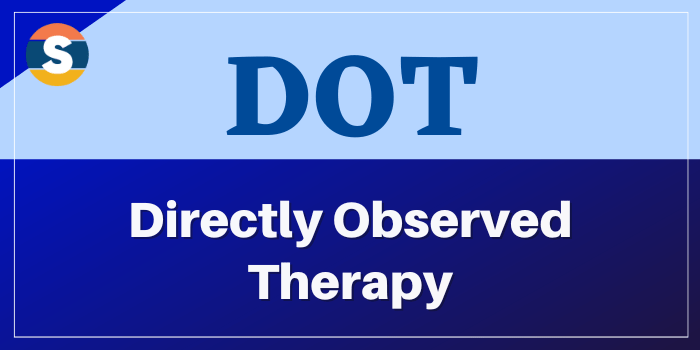
The Full form of DOT is Directly Observed Therapy, Short-course. It is also known as TB-DOTS. It refers to a strategy that aims to cure the TB (tuberculosis) and reduce the number of tuberculosis cases. In this strategy, a health care worker, nurse, physician or any other designated person (excluding the family members) provides the prescribed TB drugs to the TB patients and makes sure that the patient swallows every dose. If the patient is left alone with medicine he or she may forget to take some of their doses which may lead to the spread of drug-resistant tuberculosis. The key steps in DOTS are; delivering the prescribed medication as directed in DOTS, checking for the side effects related to medication, to make sure the patient swallows the medication, documenting the visit and answering questions related to TB and DOTS. The importance of DOTS can be stated as; it prevents TB from spreading to others, it decreases the chances of treatment failure, it helps patents finish their TB treatment as quickly as possible and without any gap and it decreases the risk of drug-resistance TB which results from the incomplete treatment. Since 1995, more than 21 million TB patients worldwide have been treated through DOTS programmes.
Instagram ID Mili Hai Koi Ji